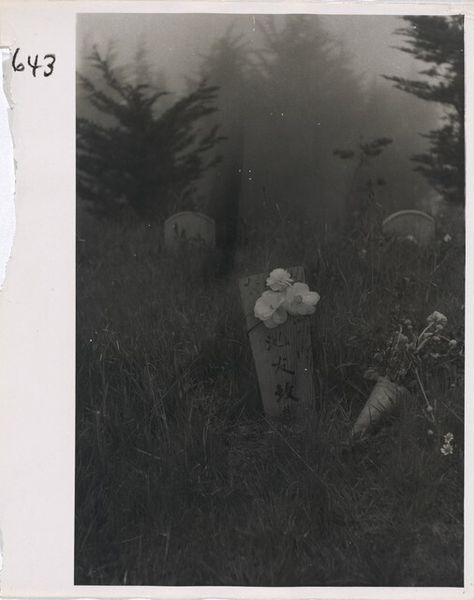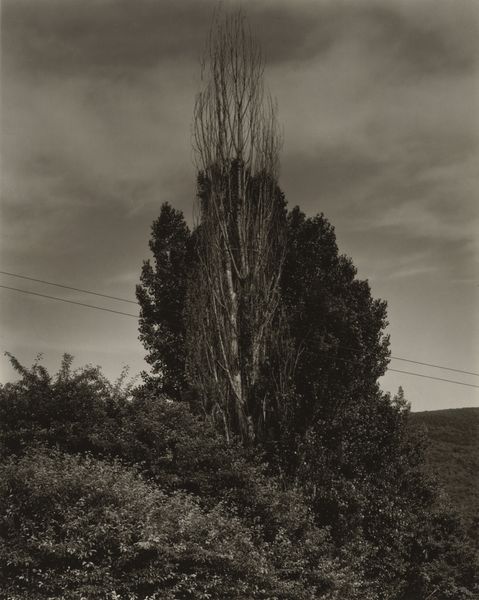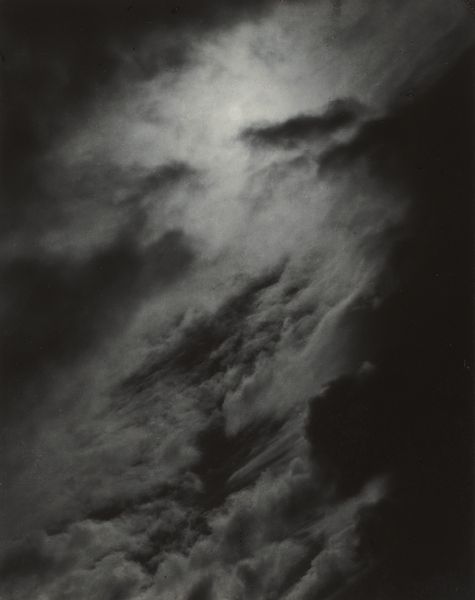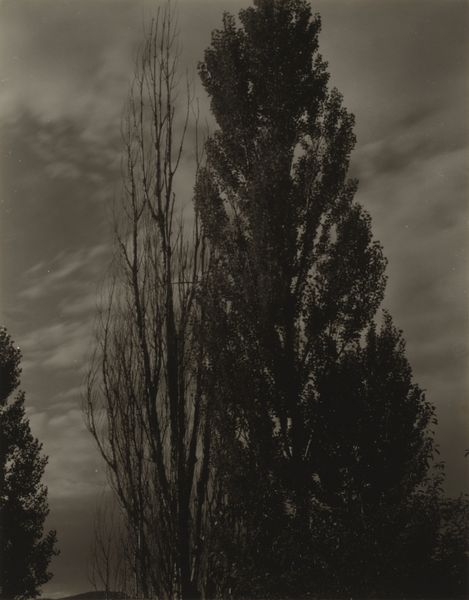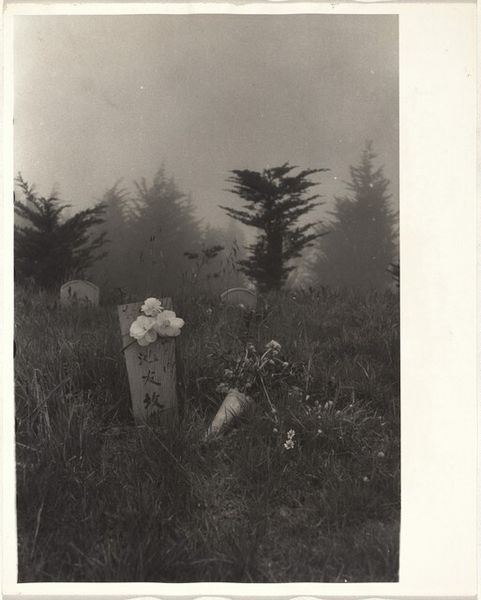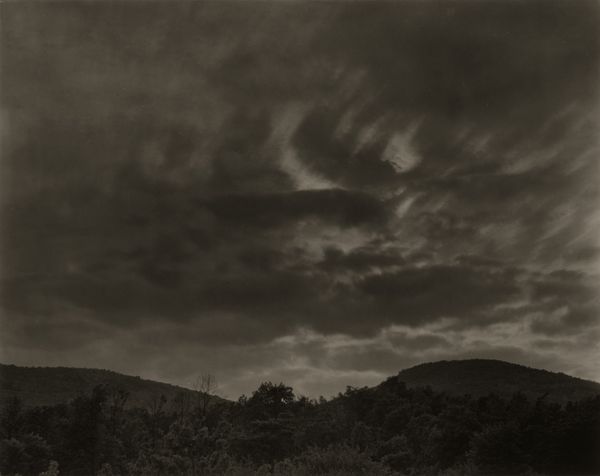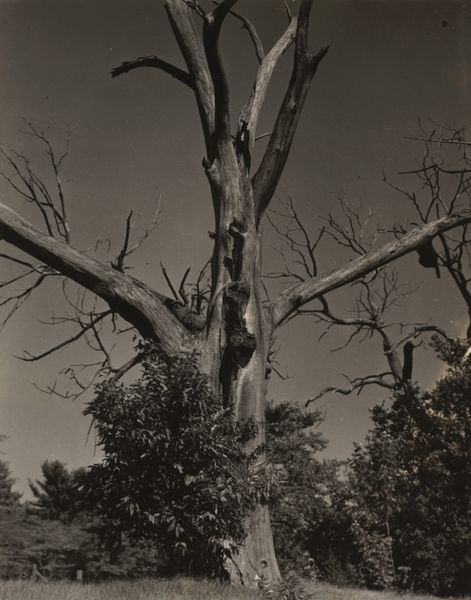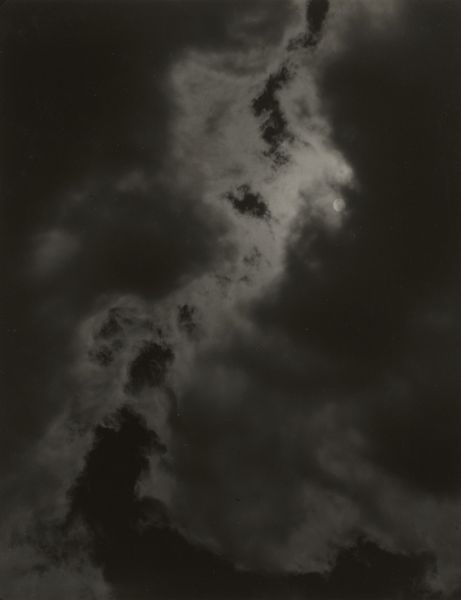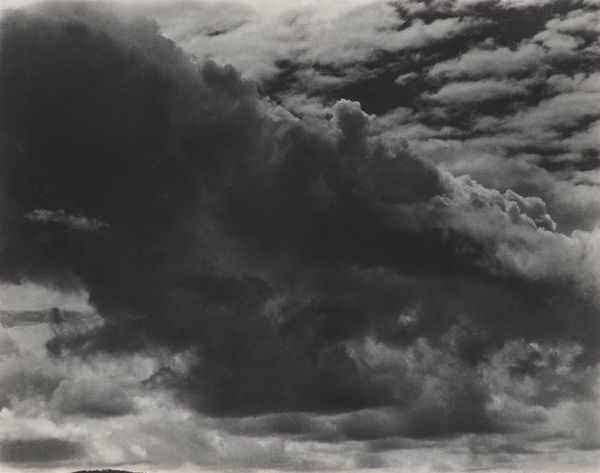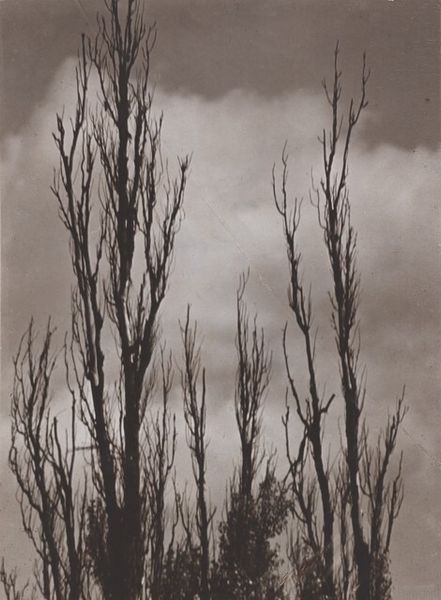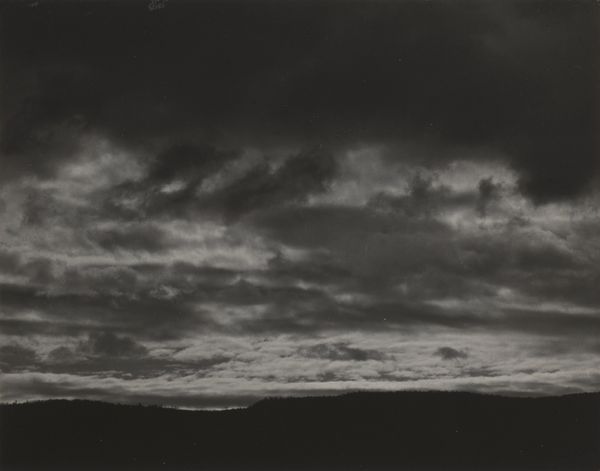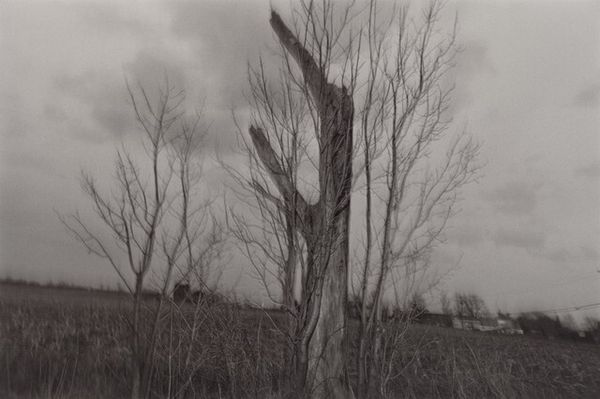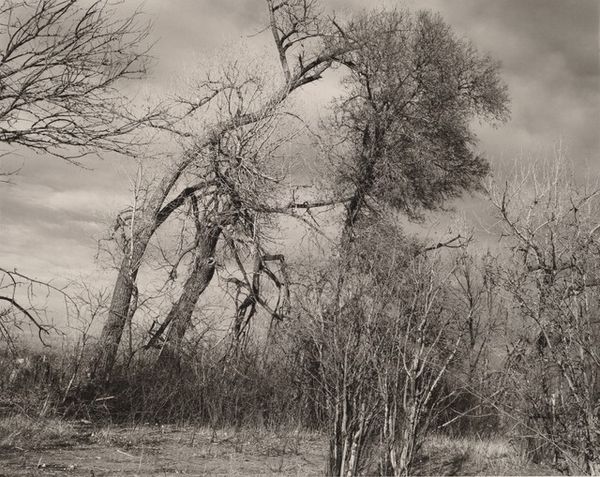
gelatin-silver-print, print, photography, gelatin-silver-print
#
gelatin-silver-print
#
black and white photography
# print
#
sculpture
#
landscape
#
black and white format
#
photography
#
black and white
#
gelatin-silver-print
#
monochrome photography
#
monochrome
#
ruin
#
statue
#
monochrome
Dimensions: overall: 50 x 39.7 cm (19 11/16 x 15 5/8 in.)
Copyright: National Gallery of Art: CC0 1.0
Editor: Ansel Adams' "Buddhist Grave Markers and Rainbow, Maui, Hawaii," captured sometime between 1956 and 1981, is haunting. The stark contrast of the gelatin silver print gives the stone monuments a palpable weight, but then there’s the faint promise of a rainbow. What am I meant to feel looking at this? Curator: A fair question. I see a layered narrative, a dance between permanence and the ephemeral. Adams, the master of black and white landscapes, frames these timeworn markers, etched with stories we can’t read, against a Pacific horizon. It whispers of mortality, yes, but that faint rainbow… that’s hope, a transient spectacle against the infinite. Notice how Adams uses light, or rather the *idea* of light, even in monochrome, to suggest depth, almost a tangible aura around the stones. Doesn’t it feel as though the spirits of those remembered there might be closest to us in those very moments after a storm, just as a rainbow appears? Editor: I hadn’t thought of it that way, about light suggesting depth in a black and white photograph. So, you are saying it's not *just* about death. Curator: Death is certainly *present*, palpable. But to focus solely on that is to miss the point, I think. The rainbow is a bridge, isn't it? A connection between worlds, or perhaps, between memories and present moments. What do you think Adams might be trying to connect? Editor: Maybe the past and present, remembrance, like a link between generations? It also makes me think about the Japanese-American experience during that time and what remembrance really meant in light of displacement, of erasure… of history. It's almost unbearably bittersweet. Curator: Beautifully put. Photography at its best captures not just a moment, but the weight of all moments past. It shows us how memory shapes our present. Editor: This was a fantastic deep dive, making me think of time's passage and the lasting power of memory.
Comments
No comments
Be the first to comment and join the conversation on the ultimate creative platform.
